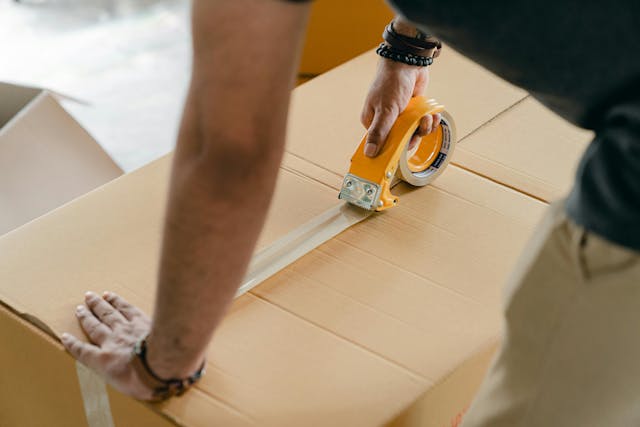Second-hand: History, Figures and Trends
24 May 2023

In the past, only families who could not afford to buy new and bargain hunters (car boot sales, auctions, flea markets, etc.) bought second-hand. Today, second-hand has become a mainstream way to consume. Many now see buying pre-owned items as a real alternative to new products. This practice continues to evolve with technological advances and the emergence of new online platforms. It offers consumers more options to find and buy second-hand goods. In this article, we look back at this not-so-new trend, ready to revolutionise every sector.
The history of second-hand
Its history goes back several decades and is closely linked to the evolution of the Internet and online commerce. It’s a fact: buying and ordering online has never been as easy and fast as it is today. As a result, our overconsumption has greatly contributed to increased waste and pollution. This undeniable outcome has led us to seek more sustainable alternatives.
It was in the late 1990s that sites like eBay (1995), Priceminister (2000) and LeBonCoin (2006) emerged. Pioneers of e-commerce who paved the way. They enabled anyone to sell and buy second-hand items. A real revolution in the world of e-commerce, as they introduced a new way of consuming!
These sites played an important role in breaking down geographical barriers. They allowed internet users from all over the world to connect. This was a first step in changing attitudes towards second-hand goods. No more throwing away old items! Aware of the economic and environmental benefits, people are extending their lifespan by donating, recycling or reselling them.
Since then, other specialist sites have emerged. Some have focused on specific sectors such as clothing, electronics or sports equipment. Today, second-hand has become a major trend in consumption. It has won over users who are increasingly aware of the environmental impact of their purchases.
Many traditional retailers have also joined the movement. They have launched their own second-hand platforms. We can mention e-commerce giants such as Decathlon, IKEA and Darty, who have expanded their offering thanks to second-hand products.
Second-hand in figures
The figures for second-hand are quite impressive. In 2022, the market was estimated at over €7 billion in France. These figures are explained by a real awareness among consumers, who are becoming increasingly responsible in their purchasing behaviour. More than 80% of online shoppers have already bought second-hand products and/or sold items online themselves!
On the other hand, brands that have understood the trend are offering their customers second-hand or refurbished products. Almost all of the 20 most visited e-commerce sites in France offer second-hand products. Second-hand offers many opportunities for retailers wishing to diversify their activities and tap into new markets across a variety of sectors.
The fashion sector:
Second-hand clothing is booming with the rise of specialised online platforms. Platforms like Vinted or Vestiaire Collective make buying and selling easy. More and more consumers are turning to second-hand for ecological and economic reasons. These are the most sold products, with 70% of buyers having bought second-hand clothes in the past year.
The automotive sector:
A sector that has appealed to the French for decades is the automotive sector! France is one of the largest markets for used cars in Europe. Around 5.6 million used cars were sold in France in 2020. This is a significant share of the French car market, as 4 out of 5 French people have already bought a used car.
The electronics sector:
Electronic devices, such as smartphones, laptops and more recently household appliances, are also in high demand on the second-hand market. Consumers are looking for quality products at more affordable prices through online sales sites. The Recommerce 2022 barometer reveals that 37% of French people have already bought a second-hand phone from a professional or a private individual.
The furniture sector:
Buying second-hand furniture is gaining popularity in France, across all generations. The lockdown period and social networks have clearly fuelled this enthusiasm for interior design and DIY, which involves customising old furniture yourself. Platforms like Selency, youzd, and Emmaüs make it possible to find second-hand furniture in good condition at reduced prices. 79% of French people admit that buying second-hand furniture is due to attractive prices, generally 50% cheaper than new furniture.
New trends in second-hand
Second-hand is becoming increasingly popular, especially among younger generations who are more sensitive to environmental issues. As well as being an eco-friendly alternative to buying new, second-hand is also often more affordable. 80% of consumers buy second-hand products to save money.
New players are entering the second-hand market, offering innovative solutions. For example, sites like Vinted and Vestiaire Collective have created online communities where buyers and sellers can exchange tips and advice on fashion and sustainability. These sites have succeeded in making second-hand more modern and trendy, while encouraging consumers to opt for more sustainable products.
Second-hand is part of a broader trend towards the circular economy, which aims to reduce waste by maximising product lifespan and recycling waste. As we become more aware of the environmental impact of our consumption, we are looking for more sustainable alternatives. In this context, second-hand is an obvious response to environmental challenges.
An opportunity for retailers
Second-hand is a market in full expansion, driven by growing awareness of ecological issues and sustainability. More than just a passing trend, it’s a long-term movement. The figures show huge potential, and current trends suggest that second-hand will continue to grow in the years to come.
As retailers, it’s important to take this trend into account and offer solutions to meet your customers’ needs. The main challenge for businesses lies in logistics. This is where Cocolis comes in, offering a collaborative delivery solution tailored to second-hand goods.
Thanks to Cocolis, retailers can offer affordable and eco-friendly deliveries by using the existing journeys of travellers on the road. This reduces CO2 emissions, as co-transport delivery saves an average of 25kg of CO2 per delivery, and also enables significant savings on logistics costs, with an average of 60% savings on delivery fees.
Find out more about our delivery solution


